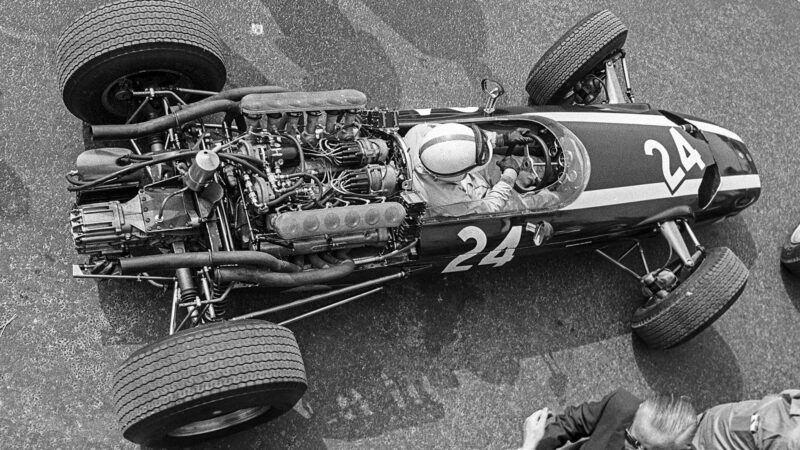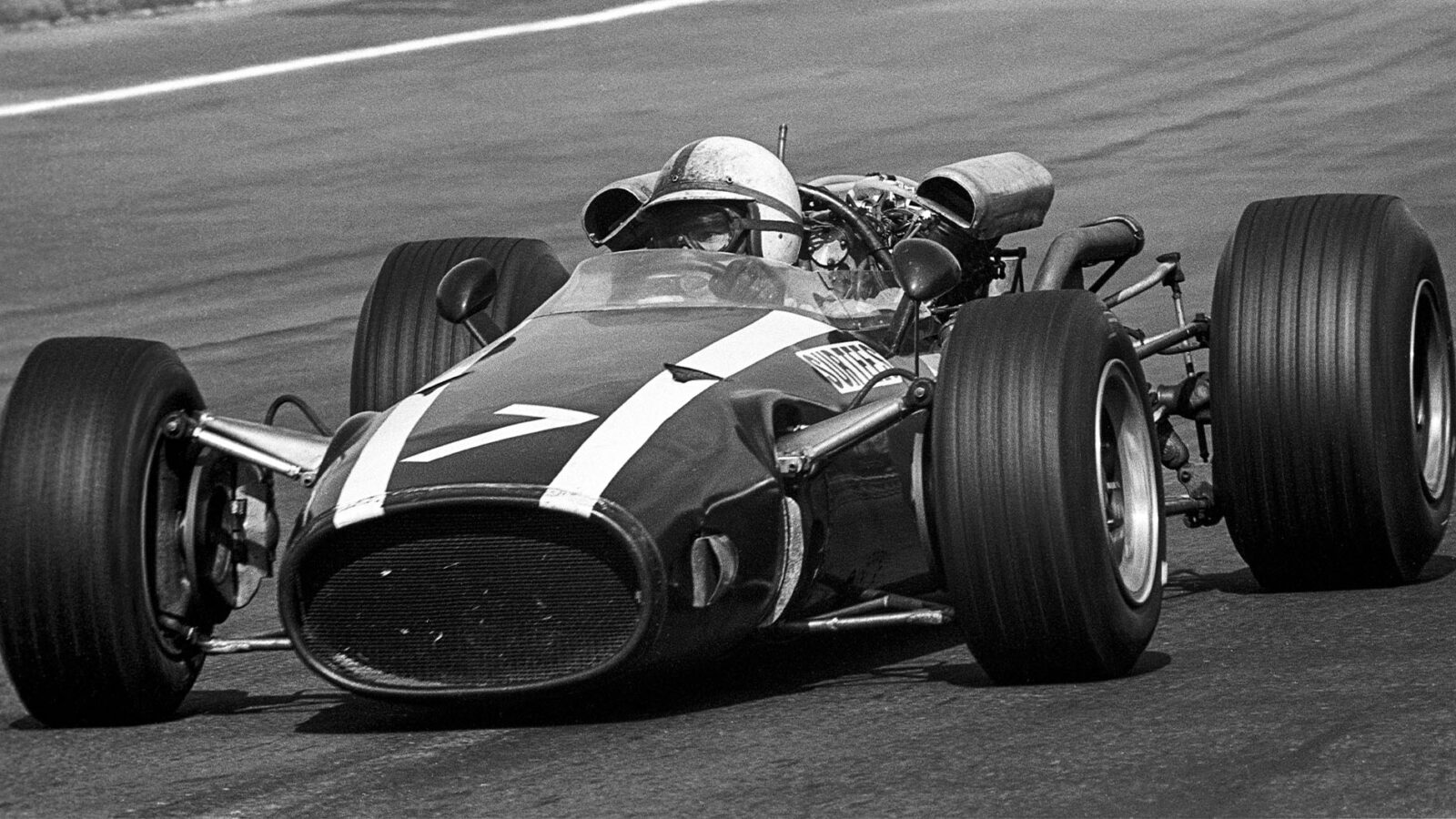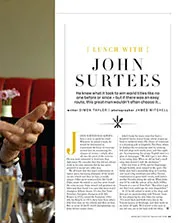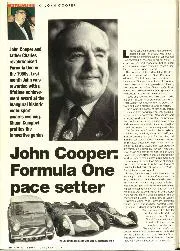When Surtees moved over to the Cooper team early in 1966 after his bust-up with Ferrari, the car’s results began to improve as a result of his input…
“Yes, we changed it a bit. I had the highest regard for (designer) Derrick White and got on well with him. I tested the car and said it didn’t fit with some of my thoughts. I lowered the rear roll centre – there was too big a differential between front and rear – which in turn changed the camber curve on the rear wheels, which helped the balance. The car tended to jack itself a bit in corners and I wanted a little understeer which could be countered with the right foot. We made adjustments to the geometry to do that, and played with spring rates. We got it to handle pretty well. And with a little bit more luck we’d have won the world title that year. Germany was a disappointment because a gear stripped, and the stupid business of the fuel tank splitting at Monza was a shame. Then I was sitting in the US GP, driving my own race behind Lorenzo [Bandini] – who had the more powerful three-valve engine Ferrari introduced after I left – able to stay with him no problem, when Peter Arundell [Lotus] came out of the pits and collected me. We got fastest lap after the resulting pitstop and finished third, but that cost us any chance of winning.”
It was Tony Robinson’s experience of building monocoques at BRP that persuaded Cooper to hire him…
Tony Robinson – the right man in the frame:

Maserati engine choice paid dividends at first
Bernard Cahier/Getty Images
“They’d taken on Derrick White from Jaguar as chief designer, assisted by Bob Marston. Both were good men, but I’m not being disrespectful if I say they lacked experience building formula cars. I’d let Cooper poke around the ’64 BRP car earlier in 1965, and I suppose that decided them that this was the way they wanted to go and that I was the person to help them. I was employed on a retainer for three months to advise and assist in the design and construction of a monocoque. My job, basically, was to fill the gap between the front and rear wheels! I brought a done-it-before aspect to the project. I was in a position to say. ‘This is the type of jig bed we need to build: this is the type of rivet we need: this is the type of structure; these are the materials I’d suggest.’ These were the basics that you learn from having done it before. Cooper ended up with a tub they could bolt all their other bits to and, as far as I know, it never let them down.”
“The tub was entirely riveted, with an anti-corrosion compound between the sheets. The build method was quite complex. You might have an inch-wide flange between sections, running a length of three of four feet. What you had to do first was drill the holes for the rivets, using gripper pins in the holes as you made them to keep them all aligned as you worked along. Then when all the drilling was done you had to take the panels apart so you could deburr the holes on the inner surface, before reassembling them with the anti-corrosion paste and riveting them together. If you didn’t go to that trouble you didn’t get a proper clamp between the panels. If you riveted without deburring which still happens with pop rivets, then once you’d shaken the chassis around a few times on the track, everything was loose. I saw one of our 1964 BRP Chassis a few years back and the riveting was still sound even though most of the skins had corroded away.”






